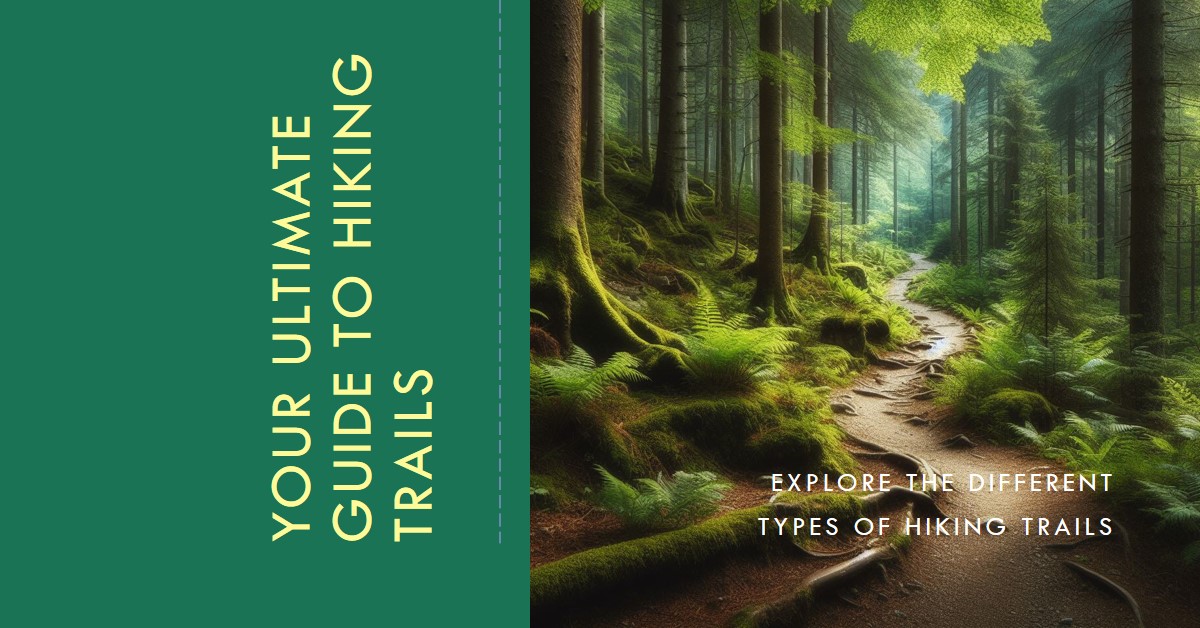Table of Contents
Perfecting the Art of Setting Up a Tent in Gale-force Winds
Ascending to the challenge of establishing a tent amidst roaring winds involves the careful use of additional stakes and guylines, coupled with strategic tent placement in less exposed areas. Understanding the techniques involved in pitching a tent under windy conditions is not just a survival skill—it’s an essential part of being a smart camper.
Even with the most robust and well-constructed tent, high winds can undoubtedly test its limitations. Nevertheless, by implementing a few critical measures, you can significantly decrease the likelihood of your makeshift home being flung into the wilderness or enduring damage. This article will unfold the secrets of mastering tent pitching in high-load winds.
By securing your tent aptly with additional stakes and guylines and choosing a location wisely, you augment its stability and longevity. Thus, ensuring a secure and serene camping encounter, despite the daunting weather scenarios.
Why Learning Adequate Tent Pitching Techniques is Important
Appropriate pitching methods, especially in heavily windy conditions, form the backbone of a rewarding and safe camping adventure. Understanding how to fasten your tent correctly can mean the difference between it being a reliable refuge or a potential hazard during harsh weather circumstances.
| Reading Ins and Outs of Appropriate Tent Pitching Techniques |
|---|
| The Significance of Choosing an Adequate Tent Spot |
| Identifying the perfect location for establishing your tent is vital for a smooth camping experience, especially when dealing with high winds. Aim for spots that offer some degree of shelter from the winds, while steering clear of sloping terrain or ardent water loggers. Prior to tent setup, ensure removal of any potential tent floor enemies like stones or debris. Nature-provided windbreaks, such as large rocks or trees, can also serve as your wind defense shield. |
| Evaluating Wind Direction for Impeccable Tent Pitching |
| Before embarking on pitch a tent, get a grip on the wind’s direction. Proceed to align your tent accordingly once you have this insight. Keeping your tent’s slimmer end against the wind lowers wind resistance and stabilizes the structure, hence decreasing any chances of a tent malfunction owing to strong gusts. |
| When Stakes and Anchors Become Lifelines |
| Securing your tent in its place amid high winds necessitates proper anchoring. Use pegs or stakes designed for the type of terrain you’re camping on, such as sturdy, long stakes for softer soils or specific sand stakes for sandy terrains. Always aim your stakes outwards at a 45-degree angle from your tent to increase their holding prowess. Stability against strong gusts can be further achieved by adding guylines or extra tie-downs. |
Key Equipment for a High Wind Tent Pitching Mission
Setting up a tent amidst forceful winds requires some essential gear to ensure stability and safety. Choose a resilient tent outlined with sturdy poles and robust construction. Search for tents designed to endure high winds, showcasing reinforced seams and a dependable frame.
Use of guy lines and stakes for complementary stability proves helpful. These ropes, attached to the tent and rooted in the ground, offer serious support. Quality stakes cloned to withstand windy conditions should be your go-to option.
Additionally, investing in wind-resistant tent accessories can further bolster security. These auxiliary friends include sandbags, providing additional weight when stationed inside the tent, and clip-ons for tent pole sleeves to keep the structure intact.
Plugging in Expertise to Pitch a Tent, Wind or High!
Venturing to pitch a tent in windy conditions can seem overwhelming, yet honing your skills to rise to such a situation can make a remarkable difference. One of the secrets lies in skillfully tensioning guy lines to avoid unnecessary flapping and damage. A secure anchor point and taut guy lines can minimize your tent’s dance movements in the wind and lower the uncertainty of it being carried away by a gust.
Similarly, tactical pitching methods can help reduce wind resistance and bolster the tent’s stability. Select a camping site that’s naturally protected from malicious winds or offers some form of shielding. Additionally, positioning your tent to align with wind direction can create a more wind-resilient structure.
In a nutshell, setting up a tent under high winds demands keen attention to detail. However, with carefully adjusted guy lines and intelligent pitching techniques, you can boost your tent’s stability, thereby reducing potential damage.
Leaping Over Hurdles of High Wind Tent Pitching
Although pitching a tent under high winds may seem like a formidable task, employing the correct techniques and equipment can help you conquer typical hurdles and assure a stable shelter. Upon facing unexpected gusts or a sudden change in wind direction, scrutinizing the wind’s behavior and modifying your tent’s position is crucial. Look for natural barriers, like trees or hills, that can mute the intensity of the wind. Furthermore, fasten your tent securely with stakes and stabilize it with guy lines.
Tackling failed pitching attempts can be exasperating, but persistence and calmness are your companions in such times. Keep a watch for any loose or missing pieces and adjust your tent’s and guy lines’ tension as required. For maximum strength and stability, use forceful tent stakes, preferably of aluminum or steel, planted into the ground at 45-degrees. To keep your tent safeguarded from storm and rain, do not underestimate the power of a properly installed rainfly. Remember, these strategic tips can substantially increase your chances of pitching your tent successfully, regardless of high winds relentlessly testing your resolve.
Venturing Smartly: Safeguarding Your Camping Experience From High Winds
Bracing the raging winds while pitching your tent warrants a well-planned approach, from choosing a wind-shielded site to securing your spot with extra stakes and guylines. Ensure that your tent flaps remain closed to deter wind gusts from making themselves at home in your temporary abode.
Safe camping in high winds is achievable with a little vigilance and the right technique. So let’s not let gusty days dampen your outdoor adventurous streak!
Being Weather-Wise: Monitoring Weather Forecasts And Avoiding Extreme Wind Conditions
When dealing with high winds during camping, maintaining weather awareness is paramount. Keeping tabs on weather forecasts can help in not only planning but also preparing for your trip, particularly when there’s a high wind warning. Wind speeds exceeding safe thresholds can pose a multitude of risks, ranging from uprooting trees, potential damage to tents, and other camping paraphernalia, to personal injury. Ascertain the wind direction and intensity before pitching your tent. And if you get a chance, choose a location that’s naturally sheltered.
Securing Loose Objects: Minimizing Damage And Injury
With high winds, unsecured camping items could swiftly turn into flying hazards, causing damage and potential injury risks. Secure the loose elements around, be it camp chairs, cooking utensils, or personal items. Store small items in well-sealed containers, and anchor the larger ones securely to the ground. Also, set up your tent in a manner that minimizes wind resistance, pointing the tent entrance away from the prevailing winds. Extra guylines or stakes can be used to lend additional support to the tent structure.
Safety First: Knowing When To Retreat and Reprioritize
In high-wind conditions, personal safety should be your utmost priority. If the gusts become tough enough to balance against or pose a threat to your safety, it’s best to seek immediate shelter. Compromising safety for the sake of camping is a no-go. Always stay alert to changing weather patterns, and be ready with an alternative shelter plan if required. Flexibility and resilience are key here, and informed decisions should always be a priority to ensure your safety and that of your fellow campers.
A Few More Pro-Tips: Pitching Your Tent Like a Pro In High Wind
Practicing makes perfect: Testing out your tent pitching skills in controlled environments can instill confidence for the real deal. Try setting up your tent in your backyard or a nearby park, and get a feel for different anchoring and guyline techniques.
Seek expert advice: Don’t shy away from getting tips and tricks from seasoned campers or outdoor experts who’ve already tested the waters in high winds. Online platforms and camping forums are a good place to find such insights and experiences.
Always have a Plan-B: If the winds are not in your favor for tent camping, it’s always wise to have an alternative shelter idea in mind. Consider options like camping hammocks and bivvy bags, or use natural windbreakers such as rock formations or dense trees. It’s all about effective planning and keeping all options open.
High Wind Tent Pitching: Frequently Asked Questions (FAQs)
How can I effectively pitch a tent amidst high wind?
To pitch your tent in high winds, your checklist should include selecting a protected location and aligning your tent such that its entrance is facing opposite the wind direction. Use guy ropes and stakes strategically to secure your tent. Furthermore, removing the rainfly (provided it’s not raining) can lower the tent’s profile, further helping to stabilize it against the wind.
Which type of tent is best suited for high-wind camping?
For camping in high-wind conditions, opt for a 4-season tent featuring a robust frame and a low-profile design. Quality fabric is another point to check for, like ripstop nylon. Other helpful features that strengthen the tent’s resistance to high winds are multiple guylines, added stakes for anchorage, storm flaps, etc. These tents are essentially designed to navigate stern weather conditions seamlessly.
What are some tips to secure my tent in high wind?
In high-wind situations, consider using extra stakes for reinforcing the tent’s corners and guyline points. Proper tensioning of the guyropes and firmly securing their anchors is a must. Consider adding weight, for example, using rocks or sandbags inside the tent when conventional stakes can’t be used. Make it a habit to regularly inspect the tightness of guy ropes and stakes throughout your stay.
Signing Off
When dealing with high winds on your camping outing, applying smart strategies and preparation can help you carve a safe and enjoyable experience. Remember, understanding the elements you’re up against is half the battle won, and deploying appropriate precautions is the other half. So gear up, stay safe, and embrace the adventure that awaits you!
The Skillful Art of Pitching a Tent in Gust: Become a Master!
For outdoor aficionados, learning to pitch a tent amidst roaring winds is an art form that can add value to their adventurous spirit. Extra stakes, guylines galore, a sheltered camping spot — these are a part of the advanced playbook you need to engage with when dealing with high winds on your camping trip.
Wild and gusty winds could potentially disrupt your outdoor enjoyment. Yet, wise techniques and smart strategies can help you combat these harsh elements and ensure your camping trip remains enjoyable even in windy exigencies. Let’s roll up our sleeves and dive into the core practices that can help you conquer the winds!
Wind, Meet Your Match: Combating High Winds While Camping
To contend with high wind scenarios while camping, you must keep yourself armed with the best tips and practices for pitching your tent. From selecting a relatively wind-protected location for your tent to using stakes and guylines for extra stability and sealing the tent flaps to bar unwanted wind gusts, careful strategy is key.
With preparation and the right know-how, you can ensure that your camping adventure stays on track, come wind or high water. So, suit up and gear up for confidently dancing with the winds on your upcoming outdoor expedition!
Forecast Friendly: Skimming Weather Predictions and Steering Clear of Extreme Winds
One of your most useful companions on a camping trip is weather awareness. Paying regular attention to weather forecasts can help you navigate your camping days better, especially in relation to windy weather. Winds blowing at high speeds can uproot trees, disrupt your tent or camp setup, or even risk personal injury. Hence, it’s important to gauge wind direction and intensity before setting up camp. If available, pick a camping spot that offers some natural wind protection.
Tight Grip: Securing Loose Items to Minimize Potential Damage
In high wind conditions, loose camping items can quickly turn into whirling hazards. Ensure that you’ve secured loose equipment, be it camping chairs, cooking utensils, or personal belongings. Smaller items can be stored in sealed containers, while bigger items can be anchored securely to the ground. Moreover, set up your tent in a way that reduces wind resistance. For instance, position your tent such that its entrance is away from the wind and use additional guylines or stakes for reinforcement.
Safety Above All: Knowing When to Retreat and Safety Reprioritization
High wind conditions demand a heightened focus on personal safety. Strong gusts that can cause potential harm and unbalance should signal you to seek instant shelter. The thrill of camping should never come at the cost of safety. Stay alert to wind patterns and be prepared to resort to alternative shelter options if needed. Remember, during blustery days, the key to a successful camping trip is staying adaptable, being resilient, and making informed decisions about safety.
Expert Level: Advanced Tips for Pitching Your Tent in High Winds
Practice before you perform: Before braving the high winds on your camping trip, it’s a good idea to practice setting up your tent in controlled environments. This can arm you with the vital skills needed to anchor tents and deploy guylines efficiently.
Experienced voices matter: There’s nothing quite like learning from those who’ve been there, done that. Seek tips from seasoned campers who’ve had their fair share of pitching tents amidst high winds. They can share useful pointers grounded in their own experiences. Outdoor forums and camping communities often serve as rich sources of such first-hand advice.
Be prepared with Plan B: If the winds are particularly unyielding for a tent-camping experience, it’s smart to be equipped with alternative shelter options. This could mean using a camping hammock or a bivvy bag, or leveraging naturally present structures such as rock formations or dense trees for shelter. Being well-armed with a Plan B helps ensure that your outing doesn’t hit a roadblock due to strong winds.
Clearing The Air: High Wind Tent Pitching FAQs
How do I effectively pitch a tent amidst strong wind?
To pitch a tent successfully in strong wind, you must leverage a sheltered spot to combat the wind effectively. Further, your tent should be positioned such that its entrance is opposite the wind’s direction, and guylines and stakes should be used strategically to secure the tent. If it isn’t likely to rain, removing the rainfly can be an option for reducing the tent’s profile, thus augmenting its stability despite the high winds.














